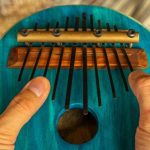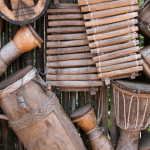 Mysteries
Mysteries  Mysteries
Mysteries  History
History 10 Surprising Stories About the Texas Rangers
 Humans
Humans 10 Philosophers Who Were Driven Mad by Their Own Theories
 Miscellaneous
Miscellaneous 10 Video-Game-Worthy Weapons and Armors from History
 Weird Stuff
Weird Stuff 10 Psychics Who Accurately Predicted Wartime Events
 The Arts
The Arts 10 Pieces of Art Inspired by a Broken Heart
 Health
Health 10 Science Fiction-Sounding New Medical Treatments
 History
History 10 Surprising Facts About the Father of Submarine Warfare
 Space
Space Ten Astonishing New Insights into Alien Worlds
 Weird Stuff
Weird Stuff 10 Bizarre Summer Solstice Rituals Still Practiced Today
 Mysteries
Mysteries Top 10 Haunting Facts About the Ghost Ship MV Alta
 History
History 10 Surprising Stories About the Texas Rangers
 Humans
Humans 10 Philosophers Who Were Driven Mad by Their Own Theories
Who's Behind Listverse?

Jamie Frater
Head Editor
Jamie founded Listverse due to an insatiable desire to share fascinating, obscure, and bizarre facts. He has been a guest speaker on numerous national radio and television stations and is a five time published author.
More About Us Miscellaneous
Miscellaneous 10 Video-Game-Worthy Weapons and Armors from History
 Weird Stuff
Weird Stuff 10 Psychics Who Accurately Predicted Wartime Events
 The Arts
The Arts 10 Pieces of Art Inspired by a Broken Heart
 Health
Health 10 Science Fiction-Sounding New Medical Treatments
 History
History 10 Surprising Facts About the Father of Submarine Warfare
 Space
Space Ten Astonishing New Insights into Alien Worlds
 Weird Stuff
Weird Stuff 10 Bizarre Summer Solstice Rituals Still Practiced Today
10 Extremely Strange Designs of Common Musical Instruments
Musical instruments, in their traditional forms, are beloved for their familiar sounds and iconic designs. Yet the world of music is not limited to the standard shapes and sizes we’ve come to know. Throughout history and into modern times, inventive minds have pushed the boundaries of musical instrument design, resulting in some truly bizarre creations. These unconventional instruments not only challenge our perceptions but also expand the sonic possibilities available to musicians.
Imagine a trumpet with the added complexity of a trombone slide or a guitar boasting an astonishing 42 strings. These strange designs often emerge from a desire to explore new sounds, solve unique problems, or simply innovate. While some of these instruments find their niche in specific genres or recordings, others remain curious experiments, rarely seen or heard by the general public. In this list, we will explore ten such extraordinary musical instruments.
Related: 10 Unusual, Little-known Musical Instruments
10 Firebird Trumpet
The Firebird trumpet is a remarkable fusion of two brass instruments: the trumpet and the trombone. This unique instrument was the brainchild of legendary trumpeter Maynard Ferguson and instrument designer Larry Ramirez. Unlike a standard trumpet, the Firebird incorporates a trombone-style slide alongside the trumpet’s traditional three valves. This hybrid design allows musicians to achieve both the rapid valve passages of a trumpet and the smooth, sliding notes of a trombone, offering a new realm of expressive possibilities.
Crafted primarily by Holton, the Firebird trumpet is exceptionally rare and typically custom-made for musicians seeking its distinctive sound. Adding the slide requires a significant adjustment in playing technique, making it a specialist instrument not commonly found in orchestras or bands. However, for those who master it, the Firebird trumpet provides unparalleled versatility and a unique tonal palette.
While not widely used, the Firebird trumpet has made appearances in jazz and contemporary music, showcasing its capabilities in the hands of skilled musicians. Its creation stands as a testament to the endless possibilities of musical innovation and the collaborative spirit of artists and designers pushing the boundaries of what instruments can do.[1]
9 Stroh Violin
The Stroh violin is a fascinating deviation from the traditional wooden violin, replacing the familiar body with a metal resonator and horn. Invented by John Matthias Augustus Stroh in the late 19th century, this instrument was designed to amplify sound more effectively for early recording technologies. Before the invention of electric amplification, recording studios needed louder instruments to capture clear audio, and the Stroh violin’s mechanical design fit this need perfectly.
The metal resonator and horn project the sound much more efficiently than a standard violin, making it ideal for the acoustic recording era. Its unique appearance, reminiscent of a phonograph, sets it apart visually from its wooden counterparts. This striking design not only made it a practical tool for musicians of the time but also a conversation piece in any musical ensemble.
Despite its niche purpose, the Stroh violin found a place in various musical genres, particularly in early 20th-century recording sessions. Its distinctive, somewhat metallic sound provided a different tonal quality that was both novel and useful. Today, while it is no longer in common use, the Stroh violin remains a fascinating example of how technological needs can drive musical innovation.[2]
8 Contrabass Balalaika
The contrabass balalaika is a strikingly large, triangular stringed instrument from Russia designed to produce deep, resonant tones. This instrument resembles a giant version of the traditional balalaika and features a massive body and three strings. Its size and unique design allow it to play bass parts in folk ensembles, adding a rich foundation to the music.
Crafted with a wooden body and typically strung with nylon or gut strings, the contrabass balalaika produces a sound that is both powerful and mellow. Musicians play it with their fingers or a plectrum, and its large, triangular shape makes it a visually impressive instrument on stage. The deep, resonant tones it produces are ideal for complementing the higher-pitched instruments in a balalaika orchestra, creating a balanced and harmonious sound.
Despite its unusual size and shape, the contrabass balalaika has found a dedicated following among musicians who appreciate its unique sound and cultural significance. It is commonly used in Russian folk music, providing a distinctive bass line that enriches the overall texture of the ensemble. The instrument’s deep, booming tones are a testament to the versatility and adaptability of traditional folk instruments.[3]
7 Pikasso Guitar
The Pikasso guitar, designed by renowned luthier Linda Manzer for jazz virtuoso Pat Metheny, is a stunning work of art with an incredible 42 strings and four necks. This complex instrument allows for a vast range of sounds and simultaneous string vibrations, creating rich, layered tones that are impossible to achieve with standard guitars. The Pikasso guitar’s intricate design and extraordinary capabilities make it a marvel of modern luthiery.
Crafted with meticulous attention to detail, the Pikasso guitar combines traditional and innovative elements. Each of its four necks serves a different musical purpose, from standard fretting to unique tunings and specialized techniques. The multiple necks and strings allow musicians to explore new harmonic and melodic possibilities, making it a versatile tool for creative expression.
Although the Pikasso guitar is a highly specialized instrument, it has made a significant impact in the world of music. Its unique sound and visual appeal have captivated audiences and musicians alike, showcasing the endless possibilities of guitar design and performance. This extraordinary instrument continues to inspire and challenge musicians to explore new frontiers in their musical journeys.[4]
6 Superbone
The superbone is an innovative brass instrument combining slide and valve mechanisms, offering musicians a unique blend of trombone and trumpet features. This hybrid instrument, notably manufactured by Holton as the TR395 Superbone was popularized by jazz legend Maynard Ferguson, who appreciated its versatility and expressive potential. The superbone allows for the rapid valve passages typical of a trumpet while also providing the smooth, gliding notes of a trombone slide.
This ingenious design features a standard trombone slide alongside three trumpet valves, enabling players to switch seamlessly between the two playing techniques. The dual mechanism expands the instrument’s range and flexibility, allowing for a greater variety of musical expressions and styles. The superbone’s ability to easily produce staccato and legato notes makes it a favorite among adventurous musicians.
The superbone is a testament to the innovative spirit in musical instrument design, blending the best features of trombones and trumpets into a single, versatile instrument. Its creation has inspired musicians to experiment with new sounds and techniques, contributing to the evolution of brass music in exciting and unexpected ways.[5]
5 Subcontrabass Flute
The subcontrabass flute is an extraordinary member of the flute family, towering over its counterparts with an impressive height of over 8 feet (2.4 meters). Designed to produce very low pitches, this massive instrument adds a profound depth to flute ensembles. Its deep, resonant tones create a unique sound texture that is powerful and haunting, making it a favorite in contemporary and experimental music.
Constructed primarily from metal, the subcontrabass flute features a complex system of keys and a wide bore to accommodate its low register. Playing this instrument requires significant breath control and strength due to its size and the volume of air needed to produce sound. Musicians who master the subcontrabass flute can achieve a wide range of expressive possibilities, from gentle whispers to booming bass notes.
The subcontrabass flute exemplifies the innovative spirit in musical instrument design, pushing the boundaries of what flutes can achieve. Its imposing presence and remarkable sound continue to inspire composers and performers, expanding the horizons of flute music in bold and exciting ways.[6]
4 Octobass
The octobass is a colossal member of the string instrument family, dwarfing the double bass with its immense size and incredibly deep tones. Invented in the mid-19th century by French instrument maker Jean-Baptiste Vuillaume, the octobass stands at an impressive height of over 11 feet (3.3 meters), making it the largest stringed instrument in the violin family. Its design includes three strings, and it is typically played with the help of levers and pedals due to its massive size.
The instrument’s unique construction allows it to produce notes that are one octave lower than those of a standard double bass. This gives the octobass a deep, resonant sound that can add a powerful bass foundation to orchestral music. The octobass’s rich, booming tones are so low that they are often felt as much as they are heard, providing a unique sensory experience for both the player and the audience.
Despite its impressive sound, the octobass is a rarity in the world of music, largely due to its enormous size and the complexity of its design. Only a few examples exist today, and they are typically found in museums or used in special performances by orchestras. The instrument’s distinctive appearance and sound make it a fascinating piece of musical history.[7]
3 Viola Organista
The viola organista is a unique instrument invented by the legendary polymath Leonardo da Vinci. Combining elements of both the keyboard and string instruments, the viola organista uses a rotating wheel to bow the strings, which are pressed by keys similar to those on a harpsichord. This ingenious design produces a rich, continuous sound that resembles a viola played with a bow, blending the characteristics of keyboard and string instruments in a single, harmonious creation.
Leonardo sketched the design for the viola organista in the late 15th century, but it wasn’t until 2013 that a functional model was constructed by Polish concert pianist and instrument maker Sławomir Zubrzycki. The instrument’s complex mechanism requires meticulous craftsmanship, with a wheel covered in horsehair or other materials to simulate the action of a bow. As the keys are pressed, the wheel rotates and produces sound by bowing the strings, allowing for sustained notes and dynamic expression.
The viola organista is a testament to Leonardo da Vinci’s extraordinary vision and creativity. Its seamless blend of keyboard and string elements continues to captivate audiences, offering a glimpse into the boundless possibilities of musical invention. Zubrzycki’s successful construction of the instrument brought da Vinci’s 500-year-old design to life, demonstrating the timelessness of Leonardo’s innovative spirit.[8]
2 Heckelphone
The heckelphone is a unique woodwind instrument that closely resembles a bassoon but plays an octave lower. Developed by Wilhelm Heckel in 1904, this instrument was designed to fill a gap in the woodwind family by providing deeper, richer tones. Its design features a wider bore and a larger bell, contributing to its powerful and resonant sound, making it ideal for adding depth to orchestral and solo performances.
The heckelphone’s construction allows it to produce a distinctive timbre that sets it apart from other woodwinds. Its sound is described as darker and more robust than that of the oboe or English horn, making it particularly effective in conveying dramatic or somber musical passages. Despite its unique qualities, the heckelphone is rarely used due to its challenging playability and the limited repertoire available for it.
In orchestral settings, the heckelphone is typically employed to enhance the bass section or to provide a unique color in woodwind ensembles. Composers like Richard Strauss and Paul Hindemith have utilized the heckelphone in their works, showcasing its ability to blend seamlessly with other instruments while also standing out with its rich, resonant voice.[9]
1 Laser Harp
The laser harp is a groundbreaking instrument that replaces traditional strings with laser light beams. Invented by French composer and musician Jean-Michel Jarre in the 1980s, this innovative instrument is played by interrupting the laser beams with one’s hands. Each beam corresponds to a different note, and the interruption of the beam triggers a sensor that produces the corresponding sound, creating a visually stunning and sonically unique performance.
The laser harp operates using photoelectric sensors that detect the player’s hand movements. These sensors are connected to a synthesizer or computer that translates the movements into musical notes. This allows for an incredible range of sounds and effects, making the laser harp a favorite in electronic and experimental music. The instrument’s striking visual appeal, with its bright laser beams, also adds a captivating element to live performances.[10]








